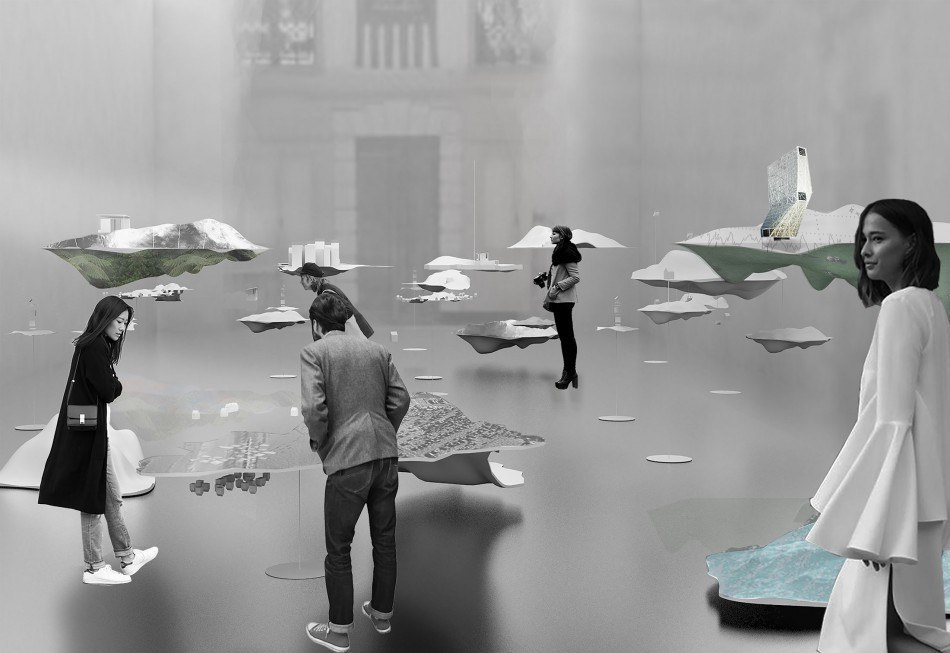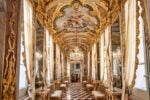15. Mostra Internazionale di Architettura – Nuova Zelanda

La Nuova Zelanda presenta “Future Islands”.
Comunicato stampa
Islands of memory, islands of longing, islands of prospect and refuge, islands of hospitality, (un)natural islands, islands of making and unmaking, emerging islands, re/claimed islands, and the last island — these are the islands of New Zealand’s exhibition at the Venice Architecture Biennale in 2016.
Lyrical and evocative, “Future Islands” sets out to establish New Zealand as innovative, creative, forward-thinking and bold. It is a story about New Zealand, but a conceptual connection to Venice is at its heart. The exhibition’s structure is derived from Italo Calvino’s “Invisible Cities”, a book framed around a conversation about cities and life between Marco Polo and the Mongol Emperor Kublai Khan. Over nine chapters, the famous Venetian explorer recounts tales of 55 wondrous cities he has seen, the conceit being that all the stories are fictional descriptions of Venice.
As a response to Calvino’s 55 “cities”, Future Islands will feature 55 architectural projects, deployed on 22 “islandsThe Pavilion sets out to establish New Zealand as innovative, creative, forward-thinking and bold. It is a story about the country, but a conceptual connection to Venice is at its heart. The exhibition’s structure is derived from Italo Calvino’s “Invisible Cities”: as a response to his 55 cities, the show features 55 architectural projects, deployed on 22 islands.” — floating forms made by a company that builds Armericas Cup yachts. Sited on or around these islands are more than 100 models representing projects that have recently been realized, or imagined. The exhibition, then, presents multiple stories and fictional descriptions of New Zealand architecture.
The exhibition’s commissioner is Tony van Raat of AUT University, and the creative director is Charles Walker, associate professor in AUT University’s Faculty of Design and Creative Technologies and director of Colab, AUT’s multi-disciplinary research institution.
“Islands have always provided real sites for different ways of living, and imaginary sites for possible ways of living differently,” Walker says. “They have inspired romantic and utopian narratives, and they have always been, literally, places of discovery. In this spirit, our exhibition will present contemporary architectural practice in New Zealand and explore future directions for New Zealand’s architecture.”
The island elements afford multiple readings — as landforms or clouds, vessels or plinths — and will evince a floating and perhaps ethereal quality. Charles Walker says the exhibition was designed with a wide range of exhibition visitors in mind. “Like Calvino’s Invisible Cities, Future Islands is serious, but it also has some levity,” he says. “We didn’t want to be too didactic. We want our exhibition to be atmospheric and intriguing and, although this might not be cool to admit, we want it to be beautiful. We hope the exhibition encourages encounters, not just of visitors with the islands, but also with each other.”
The exhibition, which will be staged in a palazzo in Castello, not far from Arsenale, will be accompanied by a series of symposia and cultural events and an international media programme.
The creative team led by Dr Walker and associate director Kathy Waghorn, of the University of Auckland School of Architecture and Planning includes architects Jessica Barter and Maggie Carroll (Bureaux Ltd), Jonathan Rennie (Athfield Architects) and Rewi Thompson, model maker Minka Ip, exhibition builder Stephen Brookbanks, and projection specialist Bruce Ferguson.



